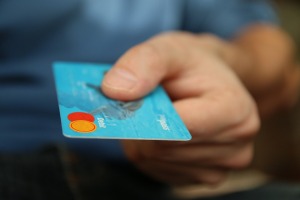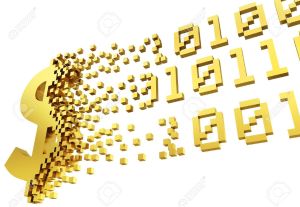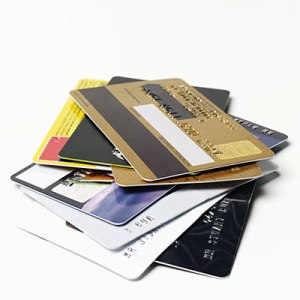Digital money, or e-money, will be the money balance documented digitally on a stored-value card. These cards have micro-processors embedded which may be loaded with a monetary worth. Another kind of electronic cash is network money, software that allows the transfer of value on computer system networks, specially the online. Digital funds are a floating claim for a private bank and other financial institution which is not linked to any particular bank account.” Samples of electronic digital money are bank deposits, electronic money transfer, direct pay in, fee processors, as well as electronic currencies.
Digital money may either be centralized, where there is usually a central point of control over the money supply, or decentralized, where the control over the money supply can come from various sources. Electronic money that’s decentralized is usually referred to as electronic currencies. The major distinction between E-money and digital currencies is the fact E-money won’t change the valuation on the fiat currency (USD, EUR) it symbolizes, but digital currency just isn’t equal to any fiat currency. To paraphrase, all digital currency is Electronic money, but Electronic money is not necessarily digital currency. Many mobile sub-systems are already introduced during the past several years including Google Wallet and Apple Pay.
Electronic money Heritage
In 1983, a study paper by David Chaum introduced the thought of digital cash.” In 1990, he founded DigiCash, an electronic cash company, in Amsterdam to commercialize the ideas in his research.” It declared bankruptcy in 1998.”” In 1999, Chaum left the company.
In 1997, Coca Cola offered purchasing from vending machines using mobile payments.” After that PayPal emerged in 1998.” Other system for example e-gold followed suit, but faced issues because it was utilized by scammers and it was raided by US Feds in 2005.” In 2008, bitcoin was released, which marked the beginning of Digital currencies.”
Shawn Wikoff describes the Electronic money Law
Since 2001, the European Union has implemented the E-Money Directive “on the taking up, pursuit and prudential supervision of the business of electronic money institutions” last amended in 2009.” Worries on the real nature of EU electronic money have come to light, since calls have been made in connection with the 2007 EU Payment Services Directive favoring the use of merging transaction organizations and electronic money institutions. Such a merger could mean that electronic money is of the same nature as bank money or scriptural money.
In the usa, electronic money is controlled by Article 4A of the Uniform Commercial Code for wholesale transactions and the Electronic Fund Transfer Act for shopper dealings. Provider’s obligation and consumer’s culpability are regulated under Regulation E.
Uses of electronic money around the world
Hong Kong’s Octopus card structure: Launched in 1997 as an electronic purse for public transportation, is considered the most flourishing and fully developed implementation of contactless smart cards used for mass transit payments. After only 5 years, 25 percent of Octopus card transactions are unrelated to transit, and accepted by even more than 160 merchants.”
London Transport’s Oyster card system: Oyster is a plastic smartcard which may hold prepaid credit, Travelcards and Bus & Tram season tickets. You may use an Oyster card to travel on bus, Tube, tram, DLR, London Overground and the majority National Rail services in London.”
Japan’s FeliCa: A contactless RFID smart card, used in a variety of ways such as in ticketing systems for public transportation, e-money, and residence door keys.”
Netherlands’ Chipknip: As an electronic cash system used in the Netherlands, all ATM cards issued by the Dutch banks had value that could be loaded via Chipknip loading stations. For people without a bank, pre-paid Chipknip cards could be purchased at various locations in the Netherlands. As of January 1, 2015, you can no longer pay with Chipknip.”
Belgium’s Proton: An electronic purse application for debit cards in Belgium. Introduced in February 1995, as a means to replace cash for small transactions. The system was retired in December 31, 2014.”
Shawn Wikoff talks about Centralized systems:
Many systems-such as PayPal, eCash, WebMoney, Payoneer, cashU, and Hub Culture’s Ven will sell their electronic currency directly towards the owner. Other systems only sell through third party digital currency exchangers. The M-Pesa system is useful to transfer money through mobile devices in Africa, India, Afghanistan, and Eastern Europe. Some community currencies, like some local exchange trading systems (LETS) and the Community Exchange System, work with electronic transactions.
Mobile sub-systems/Digital wallets
Many different electronic money solutions use contactless transaction transfer so as to facilitate uncomplicated payment and gives the payee more assurance in not letting go of their electronic wallet over the financial transaction.
In 1994 Mondex and National Westminster Bank provided an ‘electronic purse’ to residents of SwindonWithin 2005 Telefónica and BBVA Bank started a payment system in Spain called Mobipay which used uncomplicated short message service facilities of feature telephones designed for pay-as you go services including cabs and pre-pay phone recharges via a BBVA current bank account debit.
In Jan 2010, Venmo launched as a mobile payment system through SMS, which transformed into a social app were friends can pay each other for minor expenses like a cup of coffee, rent and paying your share of the restaurant bill when you forget your wallet.” It is popular with college students, but has some security issues.” It can be linked to your bank account, credit/debit card or have a loaded value to limit the amount of loss in case of a security breach. Credit cards and non-major debit cards incur a 3% processing fee.”
On September 19, 2011, Google Wallet was released in the US only, which makes it easy to carry all your credit/debit cards on your phone.”
In 2012 O2 (Ireland) (owned by Telefónica)launched Easytrip to pay road tolls which were charged to the mobile phone account or prepay credit.
O2 (United Kingdom) invented O2 Wallet at about the same time. The wallet can be charged with regular bank accounts or cards and discharged by participating retailers using a technique known as ‘money messages’ The service closed in 2014
On September 9, 2014 Apple Pay was announced at the iPhone 6 event. In October 2014 it was released as an update to work on iPhone 6 and Apple Watch. It is very similar to Google Wallet, but for Apple devices only.”
GNU Taler is an anonymous, open source electronic payment system currently (September 2015) in development.
Shawn Wikoff makes clear Decentralized systems
Cryptocurrencies allow electronic money systems to be decentralized, systems include:
Bitcoin, a peer-to-peer electronic monetary system based on cryptography.
Litecoin, originally based on the bitcoin protocol, intended to improve upon its alleged inefficiencies.
Ripple monetary system, a monetary system based on trust networks.
Dogecoin, a Litecoin-derived system meant by its author to reach broader demographics.
Nxt, conceived as flexible platform to build applications and financial services around.
Hard vs. soft electronic currencies
A hard electronic currency is one that does not have services to dispute or reverse charges. In other words, it is akin to cash in that it only supports non-reversible transactions. Reversing transactions, even in case of a legitimate error, unauthorized use, or failure of a vendor to supply goods is difficult, if not impossible. The advantage of this arrangement is that the operating costs of the electronic currency system are greatly reduced by not having to resolve payment disputes. Additionally, it allows the electronic currency transactions to clear instantly, making the funds available immediately to the recipient. This means that using hard electronic currency is more akin to a cash transaction. Examples are Western Union, KlickEx and Bitcoin.
A soft electronic currency is one that allows for reversal of payments, for example in case of fraud or disputes. Reversible payment methods generally have a “clearing time” of 72 hours or more. Examples are PayPal and credit card. A hard currency can be softened by using a trusted third party or an escrow service.

 Electronic currency or simply Online digital money is actually an online environment of exchange distinct from tangible (such banknotes and coins) that presents properties like the majority of actual physical currencies, however allows for immediate financial dealings and borderless transfer-of-property. At the same time digital currencies and cryptocurrencies are types of Electronic currencies, but the actual converse is incorrect. Similar to regular money these currencies may very well be used to buy actual physical services and goods however could also be restricted to certain communities such as for instance for use anywhere inside an on-line game or maybe social networks.
Electronic currency or simply Online digital money is actually an online environment of exchange distinct from tangible (such banknotes and coins) that presents properties like the majority of actual physical currencies, however allows for immediate financial dealings and borderless transfer-of-property. At the same time digital currencies and cryptocurrencies are types of Electronic currencies, but the actual converse is incorrect. Similar to regular money these currencies may very well be used to buy actual physical services and goods however could also be restricted to certain communities such as for instance for use anywhere inside an on-line game or maybe social networks. Comparisons
Comparisons